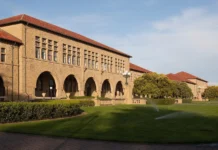Sholem Aleichem, the celebrated Yiddish writer behind the stories of Tevye the Dairyman, which inspired the beloved musical Fiddler on the Roof, died 101 years ago last Friday. Fiddler, of course, continues to entertain audiences around the world, with its seemingly everlasting narrative and music. Fittingly, the Broadway production of Fiddler was recently nominated for a Tony Award for Best Revival.
Given the Yiddish world’s tradition of honoring yahrzeit more than birthdays, a number of commemorations and celebrations have been organized in his honor. (You should have a party, too!) Curious readers can start with this excerpt from Jeremy Dauber’s biography of Aleichem, The Worlds of Sholem Aleichem, published by Nextbook in 2013. Here’s Dauber describing the funeral procession following Aleichem’s death in his Lower East Side apartment on May 13, 1916:
Twenty-five thousand people, alerted by black-bordered extra editions of the Yiddish papers, stood in lines stretching for blocks waiting to pay their respects. That Monday, May 15, 1916, three Pereyaslav landsmen, Jews from his hometown, purified and prepared the body. Everything was done strictly according to tradition, though few if any of the writers were traditional—a fitting tribute to Sholem Aleichem, whose own behavior was less traditional than his sensibility.
At 9 a.m., ten prominent Yiddish writers bore the coffin to the hearse; as they exited the house, the cantor of the Reform Bronx Montefiore Congregation sang the “El malei rakhamim,” the traditional funeral prayer. Other Yiddish writers headed a vast procession, twenty thousand strong; the writers were accompanied by over a hundred psalm-reciting children from the Orthodox Talmud Torah and the National Radical School, strange bedfellows united by the author’s appeal.
Sholem Aleichem’s surviving son, Numa, recited kaddish at [his father’s grave in Mt. Nebo Cemetery, Cypress Hills, Brooklyn]; the Yiddish writers Sholem Asch and Avrom Reyzen spoke, as did the socialist poet Morris Winchevsky and the Zionist leader Nachman Syrkin, among others. Thousands stood there, in the bad weather, listening patiently.
Those thousands at the cemetery were a small percentage of the throngs who lined the streets of the Bronx, Manhattan, and Brooklyn and watched from fire escapes and rooftops. Estimates for the total number of participants vary wildly, ranging from 30,000 to 250,000; the actual number was probably somewhere between 150,000 and 200,000. This out of a population of about 1.5 million Jews in New York City—and about 6 million New Yorkers overall. Sholem Aleichem’s audience—like the details of his funeral, like his work, like himself—contained vastnesses.
More recently, The Philadelphia Inquirer retold the story of Aleichem’s last public reading, which took place in Philadelphia in March 1916, just eight weeks before his death:
Though seldom read and appreciated today, for the millions of Jews who fled the pogroms and poverty of Eastern Europe a century ago, Sholem Aleichem’s stories, sketches, and monologues were literary and cultural guideposts. Characters such as Tevye, the milkman who talks back to God, were like family – small-town people struggling with change, distanced from past and future generations, carrying big dreams and opinions about everything.
Indeed, for those who swarmed to the Met that cold night in March, Sholem Aleichem’s world was their world, in fact as well as in fiction: While Jews had immigrated to the United States from all over Eastern Europe, the vast majority of those who ended up in Philadelphia came from the same region – today’s Ukraine – that had nurtured the young writer who aimed to make their Yiddish into a respectable literary language.
Yet fame didn’t equal fortune. Mismanaged and mistreated by publishers, promoters, and impresarios in both Europe and America, Sholem Aleichem was chronically short of cash. Which is why, ill with tuberculosis and diabetes, he had agreed to give a reading in Philadelphia.
The promoters, claiming to represent Philadelphia’s entire, 200,000-plus Jewish community, had offered him $250 to read before what they promised would be a small audience. Not until he arrived did Sholem Aleichem learn the actual venue was to be the Met, Philadelphia’s largest public hall, with 4,000 seats.
And now that the 101th yahrzeit has passed, new exhibitions and performances in his honor are ongoing. There’s “Sholem Aleichem, 1859-1916,” opening on May 22 at the YIVO Institute of Jewish Research in Manhattan. It features manuscripts, photographs, unique sound recordings, and other rarely seen materials from YIVO’s archives, including the newly acquired Sholem Aleichem Family Archive.
And for those looking for more literature in the spirit of Aleichem, The Forward published a profile of the literary work of Yiddish writer and outgoing Forverts editor Boris Sandler, in which Mikhail Krutikov, a Professor of Slavic and Judaic Studies at the University of Michigan, writes:
[Boris] Sandler’s fertile and powerful imagination grows from his close attachment to his Bessarabian Yiddishland, which is alive in his soul and memory. He has no peers in contemporary literature, and this unique position perhaps makes it difficult for an outsider to appreciate the originality of his works. Sandler’s impressively diverse and rich oeuvre does not fit easily into the compartmentalized, genre-oriented American Jewish literature, which often operates within easily recognizable cliches. American Jewish culture possesses an extraordinary but largely forgotten treasury of Yiddish literature, and Boris Sandler is one of its precious gems. One can only hope that it’s a matter of time before he is discovered and appreciated by the English-speaking readership.



























